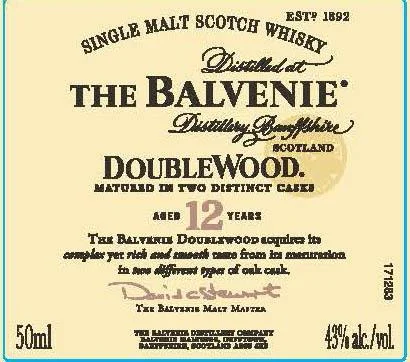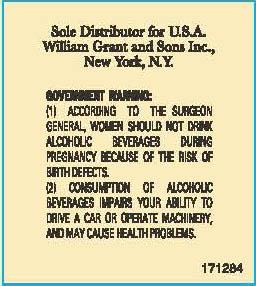The Skurnik Files: How Back Labels Can Make You A Smarter Shopper
Last week, I wrote of my experience at the Grand Portfolio Tasting presented by Skurnik Wines & Spirits. That event spurred a ton of thoughts on how I can help you, my fellow beverage consumer and today I guide you in a direction that I think most shoppers take for granted.
Skurnik, along with other suppliers, distributors, and importers, sell their products to your favorite wine shops and beverage depots across the country. Depending on the retailer you give your hard-earned money to, you could be speaking to salespeople at a specialty shop to help guide you or you are left to your own devices at a big box store, based on the level of knowledge and experience of the employees. No matter the type of store you frequent, there is always one way to help yourself get an idea of what you might like.
Take a look at the back label of that bottle
The front label of a wine bottle or whiskey bottle is always the sexy, magnetic way of drawing you into the product. It is what is displayed on the shelves, and a lot of times there are some great pieces of information to help you get an idea of what is inside those bottles. There are names of grape varieties, a wine region shown, vineyard names, village names (often in French wines), whiskey age statements, and flavors of a vodka just to name a few examples.
However, on the back is where we find the names of the suppliers. A lot of times, the web sites are listed so you can see their whole portfolio. A supplier may be heavy in Old World/European wines (like Skurnik), almost exclusively Italian (Dark Star Imports), or into South American wine, lesser-known California wines and sake (Vine Connections). Click on any of those links, and you will get stories on individual producers and their products available. You can read about the company's philosophy. Maybe you share the love of organic wines that a supplier is focused on. Or perhaps you see a supplier focused on aged rums (which you might be able to add to your personal collection of aged rums). While each product may not be available in each state, you can oftentimes approach your retailer to see if they can order you anything of interest...and your order typically arrives in 1-2 days if the supplier has the products in stock.
So if, for example, it turns out you really like Skurnik's La Colombina Brunello di Montalcino, you may end up liking Skurnik's Brunello from the producer Mocali. Even if the style is different, it should still taste good. You liked the Mocali? Try their Rosso di Montalcino or the Brunello Riserva. This is how you can develop a personal flavor profile. A high-quality supplier is carefully screening what will do well in the U.S. market or individual states, and when a wine makes it into the portfolio, it will almost always be worth trying if the wine is a style that intrigues you. I like those odds.
You might also see a wine region you never saw before. Google "Salice Salentino". You will discover that Negroamaro is a grape used in this Italian region's red wines. Check out Negroamaro and you'll find descriptions that might mirror Cabernet Sauvignon. If you are a Cabernet Sauvignon fan, chances are you might like wines of Salice Salentino.
Three wines from Central Italy, all from different producers, subregions, and importers. Lots of good data to help you, including web sites for further research.
William Grant & Sons is a supplier of the best-selling single malt Scotch whisky, Glenfiddich. If you are a fan of Glenfiddich 12 Year, perhaps you want to try the 12 Year example from Balvenie distillery, which is also in the William Grant portfolio.
Provide your feedback to your retailer. The wine manager is going to meet with representatives of these suppliers, so your favorable reviews or harsh criticisms help make future decisions on what you will encounter on the shelves. A little research and dialogue go a long way in helping you figure out smart ways to branch out, all while sticking with a style that your prefer.
So flip that bottle around every now and then. You never know what kick-ass bottle you will discover next.







